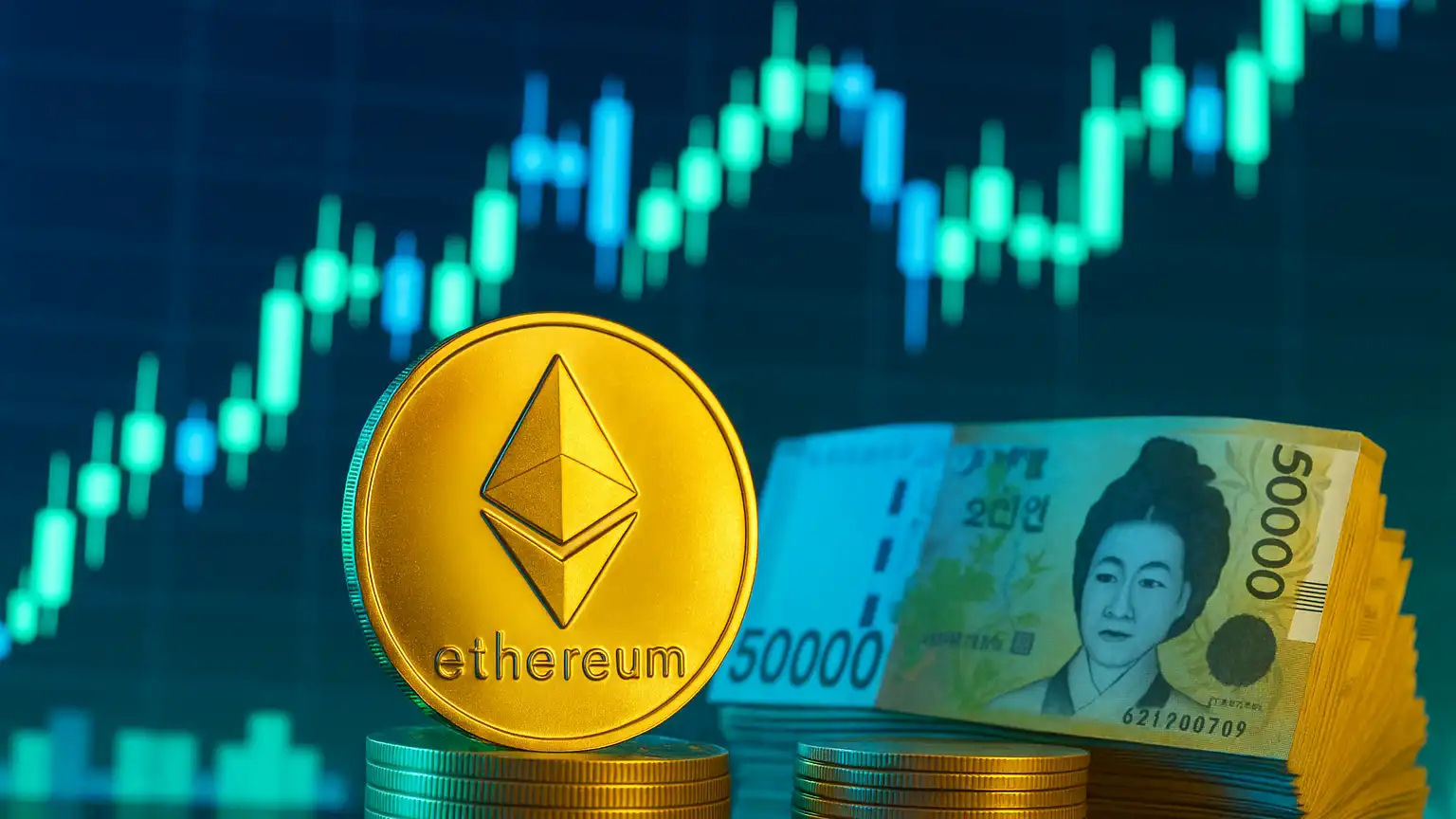ETH’s climb meets a tough question: who’s really buying?
Ethereum’s price has been grinding toward its previous peak, reigniting enthusiasm across Layer 2 ecosystems,
restaking protocols, and blue-chip DeFi. But beneath the surface, a growing share of spot activity has been
concentrated in Korean won pairs, where retail participation is often cyclical and momentum-driven. The result is a
rally that some market participants view as narrow and precariously funded.
The headline claim—roughly $6 billion in net Korean retail inflows—casts the move as less a story of broad global
adoption and more one of localized exuberance. When KRW-denominated demand outpaces USD markets, the price of ETH
can decouple from underlying fundamentals like on-chain fee growth, developer activity, and institutional allocations.
Why ETH treasuries feel the lift
Many DAOs, foundations, and protocol teams custody significant portions of their runway in ETH. When the asset’s USD
price climbs, their treasuries look healthier on paper—supporting longer burn runways, larger grants, and more ambitious
roadmaps. If the price appreciation is fueled primarily by a single geography’s retail bid, however, those treasuries
could be vulnerable to a swift markdown if demand cools. That dynamic raises governance and risk-management questions:
should treasuries diversify, hedge, or rebalance during regional flow-driven rallies?
Signals from Korea: premium, rotation, and concentration
Market watchers have flagged three recurrent markers of KRW-driven phases:
- Kimchi premium: ETH and other majors occasionally trade at a premium in KRW versus USD markets, a historical sign of domestic risk-on behavior.
- Spot-led surges: Korean venues often lead with spot volume dominance in large-caps, followed by rapid rotations into higher-beta altcoins.
- Listing gravity: Local exchange listings can spark outsized flows relative to global liquidity, pushing prices beyond what broader markets validate.
In such regimes, global order books can thin out. If Korean demand withdraws—due to volatility, policy actions, or capital constraints—price discovery reverts to
deeper USD and stablecoin books, where bids may sit lower. That gap risk is what has observers uneasy.
Not all froth: Ethereum’s structural base still matters
Ethereum retains long-term pillars of demand: staking reduces liquid float; EIP-1559 continues to burn fees during activity spikes;
and the growth of Layer 2s sustains transaction throughput even as base-layer costs fluctuate. Institutional adoption vehicles
and enterprise experiments around tokenization add depth to the ownership base. These forces don’t invalidate the concern, but
they suggest the market isn’t purely hot money. The issue is timing: structural demand is slow and steady, while regional retail
flows can move price quickly—and reverse just as fast.
Treasury playbook: caution beats complacency
For Ethereum-aligned treasuries riding this rally, risk controls matter. Disciplined teams often:
- Set allocation bands: Keep a defined range for ETH vs. stablecoins to avoid overexposure to flow-driven spikes.
- Use hedges: Options or basis trades can dampen downside without fully exiting core ETH exposure.
- Stagger conversions: Dollar-cost conversion into operational runway reduces timing risk if the KRW bid fades.
- Stress test: Model 20–40% drawdowns versus grant commitments, payroll, and roadmap milestones.
These are standard treasury tools, but they become critical when a single region appears to be the marginal price setter.
What could break the bear case
The argument that ETH is “propped up” weakens if we see broader confirmation: enduring net inflows across multiple
geographies, rising on-chain fee revenue that tightens supply via burns, renewed developer and user growth on Layer 2s,
and persistent institutional allocations. If global spot and derivatives positioning absorb supply without relying on KRW
premiums, the rally looks more durable.
What to watch next
- Kimchi premium trend: Sustained premium indicates ongoing local demand; a sharp compression can foreshadow downside.
- Share of KRW spot volume: A declining KRW share, offset by rising USD and stablecoin flows, would be a healthier profile.
- Exchange balances and flows: Rising ETH balances on Korean venues, followed by outflows, often precede volatility.
- Policy signals in Korea: Changes to listing rules, taxation, or AML enforcement can quickly alter retail participation.
- On-chain fees and L2 activity: If usage accelerates alongside price, the move looks less speculative and more fundamental.
Bottom line
Ethereum’s treasury valuations look stronger on paper, but if the latest leg higher is concentrated in Korean retail flows,
the cushion may be thinner than it appears. Until global demand broadens and on-chain fundamentals reassert themselves,
treasuries—and tokenholders—should treat the rally with respect and prepare for two-way risk.


